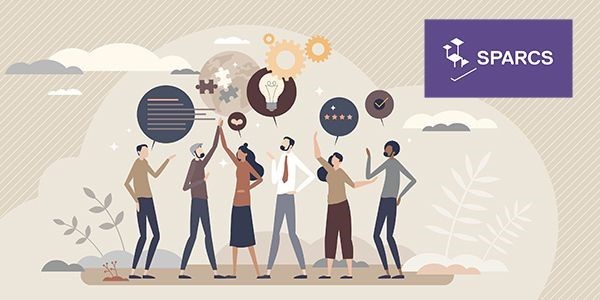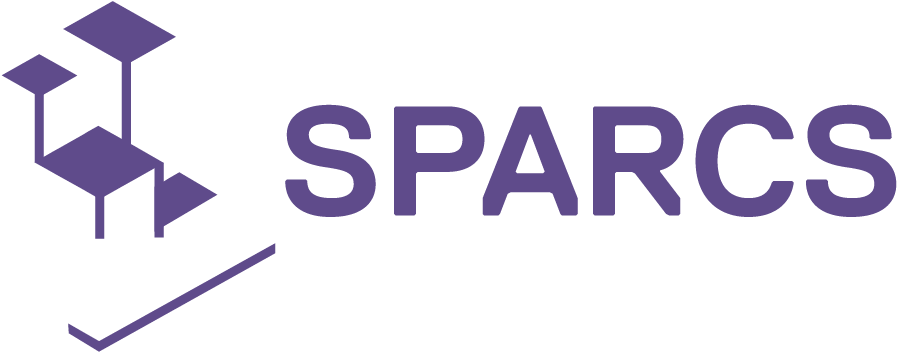Citizen engagement enables thriving future communities – summary and link to webinar recording
Citizen engagement within the Espoo Lighthouse consortium contributes to a development of a mutual community engagement strategy across SPARCS cities all over Europe. In the Citizen engagement webinar, Espoo partners presented their research findings and practical examples on citizen engagement activities organized by different public and private sector organizations.
The SPARCS Citizen engagement webinar was held on November 19th via Teams and organized by the Espoo lighthouse city partners: RIL, KONE, City of Espoo and Citycon. It gathered total of 40 participants from different cities and organizations.
How do we embed meaning into citizen engagement?
As an opening speaker, Dr. Anna Zhelnina from Helsinki Institute of Urban and Regional Studies (Urbaria), University of Helsinki, focused on Arenas for interaction and participation; How does citizen engagement work? What enables meaningful citizen engagement? Why don’t people participate? Anna introduced us to the arenas and players in the field of participation.
“The most important aspect is to know your citizens and understand their life goals and processes and realize that people’s goals can change, hence engagement and interaction needs to be fluid.”
Citizens’ opinions and choices can and will change due to the interaction. Engagement doesn’t only happen in formal arenas, but also informal spaces and arenas, such as social media platforms, are very important. Anna points out that it is important that the information and actions resonate with the thoughts and values of participants.
People’s behaviors and needs drive sustainable community co-creation
Next, we moved to the panel discussion with Elina Ekelund from Citycon and Saga-Sofia Santala from KONE to discuss citizen engagement from a private sector point of view with practical case examples of actions made in the SPARCS project.
First, Elina told a bit more about buddy class activities and Youth work collaboration workshops where local young people at Espoonlahti are working with Citycon on specific sustainability themes in events that are organized 3-4 times/year. Themes include topics such as mobility, co-design of Lippulaiva spaces and events, and visits to the construction site. Saga presented engagement activities organized by KONE; mobile probing actions that were done with citizens on mobility behavior and 1,5-degree lifestyle workshops for Espoo citizens to plan their path to sustainable lifestyle through a Climate puzzle. Elina highlighted the importance to include a community around the shopping centers and to build services and meeting points to answer the needs of citizens. Saga continued that it is important for companies to take part in the bigger sustainability change and understand how people’s everyday habits will change to build a pathway to future together.
“In order to create flourishing urban life, we need to engage all kind of stakeholders: citizens, public and private sector – and everything in between.”
When collaborating, it is important to draw from the expertise and networks of different partners, for example to reach the right target groups, facilitate workshops and provide public spaces for collaboration.
As the main thing is to support the citizens in absorbing the information and changing everyday practices for a larger behavioral change to take place, it is important to create out of the box ways for participation and encourage citizens to be a part of a community and participate. Developing new methods and finding the suitable arenas and ways to engage citizens is important. Concrete action in SPARCS is to develop common ways of working and models for collaboration between the city and the companies to do citizen engagement together.
Citizen engagement into decision-making
The webinar ended with a keynote speech from Heli-Maija Nevala, Service Manager, Communication and participation, Urban Planning Department, City of Espoo. City planning is the base to build on the future of the city and live a more sustainable lifestyle. Heli-Maija introduced the ways to engage citizens from a city point of view, while focusing on urban planning activities.
“A minimum level of citizen engagement in municipal processes is defined by the law, but City of Espoo does much more to make sure that residents are taken as a part of the decision-making process.”
City of Espoo has many tools to engage citizens, such as surveys, walks and events. Heli-Maija pointed out that it is important to take in the change and accept that change can trigger mixed feelings. It is important to tackle this challenge with high quality communication that needs to be understandable and accessible. Heli-Maija emphasized the importance of inclusion and how we can make sure that participation leads into an action that is visible for the citizens as well.
As a conclusion of the webinar, the key element in reaching the citizen engagement goals and to make a city-level impact is to co-operate with a tight network of partners; public sector, companies, research institutions, universities and schools, and local communities. It is important to understand and listen to citizens and find the right tools to reach them to reach the goal of a more sustainable lifestyle!
Watch the webinar recording and find the speakers materials here
The webinar was organized by the SPARCS project partners KONE Corporation, City of Espoo, Citycon, VTT and the Finnish Association of Civil Engineers RIL.

